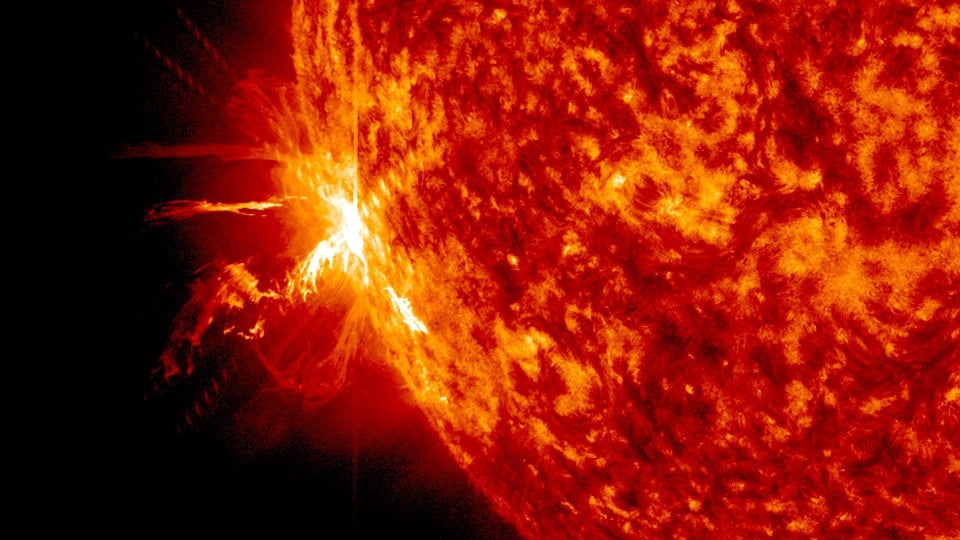Ever since astronomers first detected a strange flash of radio waves in 2007, they have been scratching their heads over what these so-called "fast radio bursts" might be and where they come from.
Now, an international team of researchers say they're one step closer to solving the mystery, after capturing the strange bursts in real-time for the first time ever.
"This is a major breakthrough," Dr. Duncan Lorimer, an astrophysicist at West Virginia University in Morgantown who was part of the team that discovered the first fast radio burst, told New Scientist.
(Story continues below.)
A simulation of CSIRO's Parkes radio telescope capturing a fast radio burst as it happened. (Video credit: Swinburne Astronomy Productions)
The burst was first spotted by the Parkes Telescope in New South Wales, Australia. The Parkes' observations suggested the burst likely came from a source near the constellation Aquarius about 5.5 billion light-years away, and passed through a magnetic field.
Twelve other ground and space telescopes then conducted follow-up observations on other wavelengths, including infrared, ultraviolet, X-ray and visible light. None of these telescopes observed an "afterglow," which allowed the team to narrow down its list of potential sources for the burst.
"The burst could have hurled out as much energy in a few milliseconds as the Sun does in an entire day," Dr. Mansi Kasliwal, an astrophysicist at the Carnegie Institution for Science in D.C. and a member of the team, told Astronomy Magazine. "But the fact that we did not see light in other wavelengths eliminates a number of astronomical phenomena that are associated with violent events such as gamma-ray bursts from exploding stars and supernovae, which were otherwise candidates for the burst."
One theory that's still in the running is that the burst came from the aftermath of a neutron star that collapsed into a black hole.
The researchers hope further observations of cosmic bursts will help them pin down the source once and for all.
"We’ve set the trap," Emily Petroff, a PhD student at the Swinburne University of Technology in Australia and one of the researchers, said in a written statement. "Now we just have to wait for another burst to fall into it.”
The findings were published online on Jan. 19 in the journal Monthly Notices of the Royal Astronomical Society.
